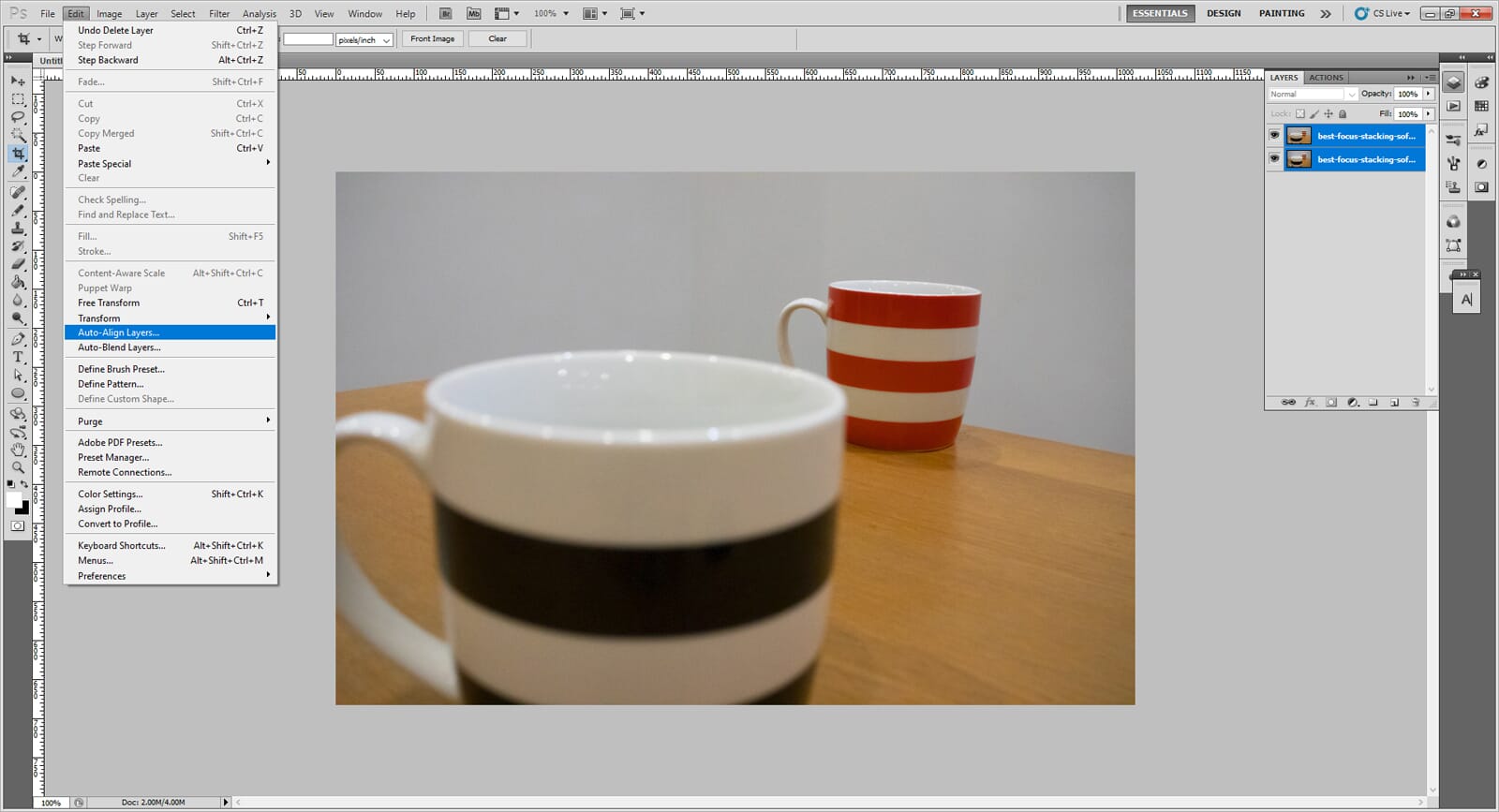
If in doubt, values of f/11-f/16 often work great with SLR cameras.

It's generally a good idea to choose as high an f-stop as possible without inducing visible softening due to diffraction. Using higher f-stop values allows for more sparsely spaced focusing distances, but this can also decrease the sharpness of the final image. The only time you can get away with just a few focusing distances is when your subject is composed of distinct layers (such as the sphere example at the beginning). In this case, the focus stacking technique really needs to be an all or nothing approach, otherwise subjects can be rendered with an unnatural and abrupt depth of field. If your subject spans the entire distance from your camera to the distant background, then you'll need to ensure that you've chosen a span of focusing distances that renders all of this in sharp focus. For advanced stacks, you might want to connect your camera to a laptop (if supported) so that you can see an enlarged preview and control the focusing distance precisely. Also try using the camera's "live view" rear LCD feature for more consistent focus distance spacing. As you can see, if the above example used a lower f-stop, more images would need to be stacked. In the example below, one can see that three photos will be sufficient as long as the image isn't displayed any larger than it is shown here:īe extra careful to avoid the wave-like depth of field which can result from focusing distances which are too widely spaced (as shown in the example to the left). The key is to experiment a lot when starting out. If you almost had enough depth of field without focus stacking, start by stacking just 2-3 images with evenly spaced focusing distances across your subject, then see how this looks. One could estimate the number of photos from a formula, but it's probably best to instead develop an intuition for how many you'll need. For example, now you can get away with a lower f-stop if you just stack more images (or vice versa). The only difference is that now you have one more dial under your control: the number of stacked images. If your subject spans a large distance and you plan on making a large print, you'll need a high f-stop to achieve sufficient depth of field. In other words, all of the same principles which apply to depth of field also apply here. This is influenced by the following factors: The most important decision with focus stacking is choosing how many photos to take.
#Focus stacking software software
Otherwise Adobe Photoshop CS4+ or specialized software packages such as Helicon Focus, TuFuse or CombineZM are required. If the subject is composed of only a few distinct layers (such as the sphere example above), then this can be performed manually using layer masks. A composite image is then created based on the sharpest regions from each of these separate photos.This step is necessary even when using a tripod, since changing the focusing distance always causes misalignment (more on this later). These photos are then aligned so that their content is overlaid pixel by pixel.In general, moving subject matter should be avoided. The number of separate photos ranges from a couple (for two distinct layers of subject matter) to as many as dozens (for expansive scenes). Several photos are taken by gradually incrementing the focusing distance across the subject.OVERVIEWįocus stacking works in three general stages: In the second part of this tutorial we'll instead focus on stacking images taken at different f-stops. In this article, we'll focus on a type of image stacking that merges several photos which were taken at different focusing distances - producing a single, extended depth of field composite (aka "focus stacking"). This avoids many of the disadvantages of using too high an f-stop, while also retaining the advantage of a large depth of field. What's the solution? To combine several separate images (aka "image stacking"). Alternatively, one may wish to freeze motion in part of their image (such as with a moving subject), but also to preserve an expansive depth of field in other parts of the photo (without resorting to using a flash).

Landscape photography: one may wish to obtain a vast depth of field, while also avoiding softness at the focal plane due to diffraction.


 0 kommentar(er)
0 kommentar(er)
